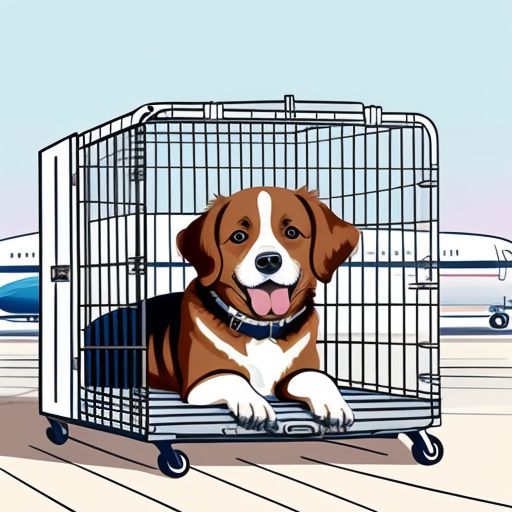For many pet owners, the thought of their beloved dog traveling in an airplane’s cargo hold can be anxiety-inducing. While it’s a standard method of pet transportation, it’s essential to understand what the experience is like for our canine companions. Let’s explore the realities, risks, and benefits of dogs traveling in airplane cargo holds.
The Cargo Hold Environment
Contrary to popular belief, the cargo hold isn’t just a dark, noisy space for luggage. It’s a specially designed area for transporting animals. Here’s what you need to know:
- The cargo hold is pressurized and temperature-controlled, similar to the passenger cabin.
- It’s equipped with proper ventilation to ensure pets have fresh air throughout the flight.
- The area is well-lit, providing a more comfortable environment for animals.
However, despite these accommodations, the experience can still be stressful for dogs. The unfamiliar surroundings, loud noises, and movement during takeoff and landing can cause anxiety in some pets.
Risks Associated with Cargo Travel
While airlines take precautions to ensure pet safety, risks are still involved. Here are some potential dangers:
- Extreme temperatures: Although the cargo hold is climate-controlled, pets may be exposed to temperature fluctuations on the tarmac.
- Stress and anxiety: The unfamiliar environment can cause significant stress for some animals.
- Potential for injury: In rare cases, pets may injure themselves trying to escape their carriers.
- Health complications: Existing health conditions can be exacerbated by the stress of air travel.
Are you worried about what airline to choose to travel with your pet? Check out our list of airlines that transport pets and their requirements.
Statistics on Pet Incidents
It’s important to consider the statistics when evaluating the risks. According to the U.S. Department of Transportation:
- In 2019, airlines reported 11 animal deaths, 8 injuries, and zero lost animals.
- Between 2010 and 2020, over 250 animal ‘passengers’ died during or immediately after airline travel.
- The incident rate is approximately 1 out of every 10,000 animal air transports.
While these numbers may seem alarming, it’s crucial to remember that millions of pets travel safely by air each year.
Benefits of Cargo Travel
Despite the risks, there are some benefits to transporting dogs in cargo:
- It allows for pet transportation on long-distance or international flights.
- Many airlines have specialized pet shipping services with trained staff.
- It’s often the only option for larger dogs that can’t fit in the passenger cabin.
Tips for Safe Cargo Travel
To ensure your dog’s safety and comfort, consider these tips:
- Choose a pet-friendly airline with a good track record.
- Use an airline-approved, well-ventilated, rigid kennel.
- Familiarize your dog with the kennel before travel.
- Avoid traveling during extreme weather conditions.
- Consider your dog’s health and temperament before opting for cargo travel.
Alternatives to Cargo Travel
If you’re uncomfortable with the idea of your dog traveling in cargo, consider these alternatives:
- Driving to your destination, if possible.
- Using a pet transportation service that specializes in ground transport.
- Booking a pet-friendly airline that allows larger dogs in the cabin (though these are rare).
Conclusion
While traveling in an airplane’s cargo hold can be stressful for dogs, many pets make the journey safely every year. By understanding the risks and taking proper precautions, you can make an informed decision about whether cargo travel is right for your furry friend. Always prioritize your pet’s safety and comfort when making travel plans. Remember, each dog is unique, and what works for one may not work for another. Consult with your veterinarian before making any decisions about air travel for your pet. With careful planning and consideration, you can ensure that your dog’s journey is as safe and comfortable as possible.





